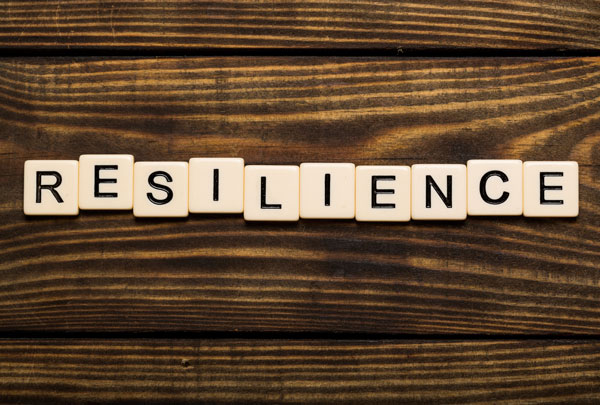Why Can’t I Get Over This?
Have you ever caught yourself wondering why you can’t get over a setback, a mistake (yours or someone else’s), a conflict or a big change?
Sometimes we easily shrug off frustrations or difficulties. Other times, they really get under our skin. We may stay stuck in frustration even as we push ourselves to move forward and be more resilient.
I’ve found that people often misunderstand resilience. It doesn’t mean that we will move past roadblocks effortlessly or just have to find a way to survive them. Instead, true resilience requires delving into our thoughts and feelings and taking a look at successes and failures – so we can learn from them and make different choices.
Recently, I worked with an executive coaching client to help her navigate through a tough situation. Someone at her office “threw her under the bus” in a meeting by doing exactly the opposite of what he had committed to doing. Not only did his behavior fall short of my client’s expectations, it also felt dishonest and disrespectful.
She kept telling herself, “Fine, it happened. I’m not happy about it. But I need to just get over it.” Instead of allowing herself to fully explore her feelings, she kept trying to set them aside like they didn’t matter. As you might expect, she just couldn’t. She kept replaying the scenario in her head again and again. Does this sound familiar? When you are stuck in anger or frustration for days, it’s typically an indicator that a core value that you hold near and dear is involved. By taking the time to identify which specific value was violated (in this case, honesty) instead of ignoring it, my client figured out how to work through this challenging situation. She gave the other party constructive feedback about what happened and how it affected her, which finally allowed her to move on.
To help her further develop her resilience, we used a simple two-step process. Here’s how it works.

Step 1: Increase Your Self-Awareness
Although it might seem counterintuitive, it’s important to ask yourself, “What am I feeling? Let it all out, uncensored. It’s OK to feel how you feel, even if you’re not feeling very kind in that moment! Acknowledging and naming your emotions, whatever they are, will go a long way toward helping you process them.
The next question to ask yourself is “What am I thinking?” Are you falling into any thinking traps, such as assuming you know what others are thinking or downplaying positives while exaggerating negatives? Notice the story you are telling yourself about what happened in this situation. Take a few minutes to write your specific thoughts and feelings down. It may help you make connections you otherwise might not notice.
Next, ask yourself “How am I framing the situation?” For example, maybe you’re framing a colleague’s lack of enthusiasm for your idea as dismissive or disrespectful. Look at the evidence to better understand how you’re interpreting the situation, and whether or not it is accurate. You might realize that your colleague’s behavior had nothing to do with you.
Step 2: Make a Different Choice
Once you’ve identified your feelings and thoughts, and how they are helping or getting in your way, you will notice more options in front of you. And remember that you get to decide how you want to show up in this situation, regardless of how others are showing up. You may still decide to let all your frustration go and just move on, but that’s very different than just “sucking it up” and repressing your feelings. By treating yourself with compassion and by gaining more insight about yourself and others, it will serve you well. You’ll also be a lot happier and more effective without those repressed feelings threatening to bubble up at any moment.
This week, give yourself a little more space to process any setbacks, changes or frustrations that come your way. Take time to notice what you’re thinking and feeling — it’s the first step toward true resilience. And remember, that small steps can lead to big results.
Planning for Next Year?
As 2015 winds down, arm yourself and your team with easy-to-use, high impact tools. Check out our products (including the Leadership EDGE SeriesSM booklets and Show Up. Step Up. Step Out) to start getting results immediately without breaking the budget.




